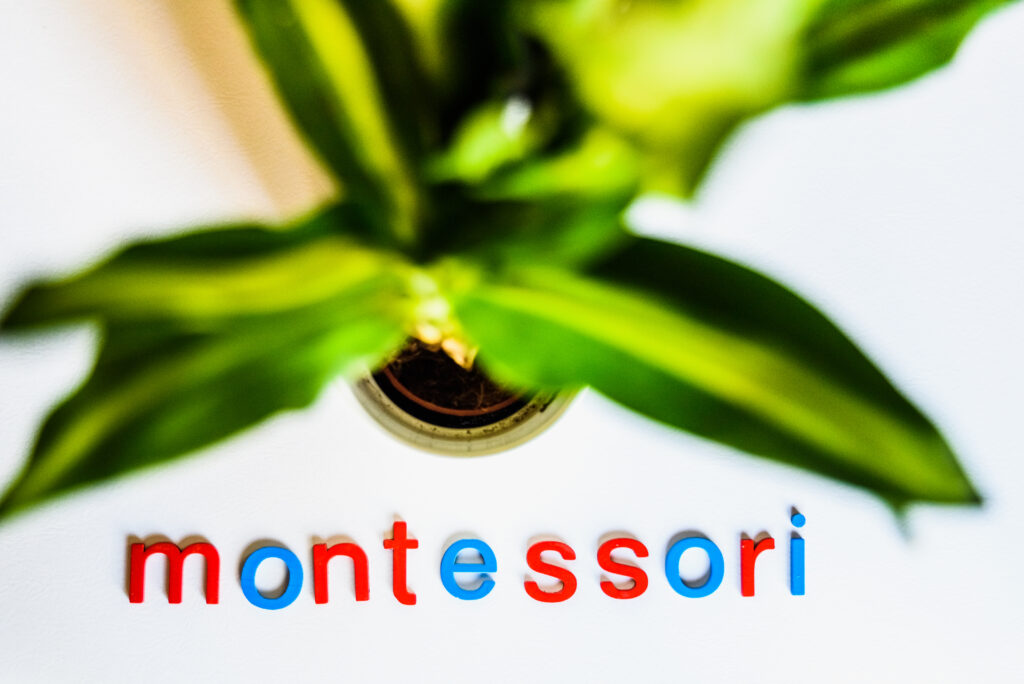Montessori classrooms are set apart from traditional classrooms in many ways. Two aspects of Montessori classrooms that people find confusing are the age groups and the fact that children of different ages work together in one room.
In this article, we'll look at how Montessori schools often divide their age groupings and we'll find out why mixed-age classes work well for this method of education.

The 7 Montessori age groups
While most properly credentialed Montessori schools operate in the same way, local regulations, staffing, and other factors can impact their age groupings.
Below is a list of the typical Montessori age groups.
Though there are 7 Montessori age groups listed here, Montessori middle schools and high schools are few and far between.
Infant and toddler programs are also considerably more difficult to find, as are Montessori parent-infant classes.
Dr. Montessori's research focused mainly on the 3-6 age group. This, and the fact this age group is a period of rapid brain development and opportunity for the refinement of the senses in preparation for life and learning, is the reason Montessori primary programs are the most common.
The skills, learning habits, and enjoyment of learning following the primary years (3-6) follow children throughout their academic careers, whether they remain in a Montessori program or not.
- Infant (0-18m)
- Toddler (18m-3 years)
- Children's House (3-6 years)
- Lower Elementary (6-9 years)
- Upper Elementary (9-12 years)
- Middle School (12-15 years)
- High School (15-18 years)
You will notice that, starting at the age of 3, each age group spans a full 3 years. The reason for this is that Montessori utilizes mix-age classrooms to achieve a full 3-year-cycle, in which children explore, experiment, and become experts.
If you are only familiar with traditional methods of education, you may be wondering about the benefits of a mixed-age classroom/ 3- year-cycle.
For those new to this concept, the thought of a 3-year-old working alongside a 6-year-old might give rise to thoughts of the younger child feeling inferior or the older child feeling bored.
So, what are the benefits of having children with such an age gap learning in the same space?
The benefits of Mixed-age classrooms within the Montessori age groups
Mixed-age classrooms are wonderful places that hold many benefits for children. Here are several of these benefits.
Self-paced learning
Children can work at their own pace. If a child has mastered a particular concept and they are ready to move on, the materials and corresponding presentations are available to them.
If a child is struggling with an activity, they are able to continue working at it without feeling “left behind” while the rest of the class moves on.
Children of all abilities can flourish in a mixed-age classroom.
Comfort
Switching classrooms every year is stressful, especially for very young children. Children in a mixed-age classroom get to stay in the same room with the same teacher for 3 years.
The teacher also gets a chance to know her students well as far as interests, strengths, and struggles and she gets the chance to learn the nuances of their personalities.
When the teacher and students are familiar with each other and the classroom, it creates a very comfortable environment for everyone.
Community
Children learn to help and ask for help from their peers. Cooperation is innate in this type of environment and because of this, social skills are refined within the Montessori age groups.
Children in these classrooms learn to care for, and about, each other.
Children get the chance to be experts
Younger children learn and look on and older children get the chance to teach, reinforcing their own learning.
The children who have been in the classroom the previous year(s) are familiar with the setting and routine and get to be role models for the newcomers. This is great for the development of self-esteem.
Inversely, students new to the classroom get the benefit of having other children that can show them the ropes.
Academic benefits
Students in mixed-age classrooms demonstrate better reading and language skills.
Mastery of math can be enhanced, as well, as children are able to work at their own level, while simultaneously “looking ahead” when observing their peers.
A more well-behaved classroom
It has been shown that mixed-age classrooms operate with fewer behavior incidents.
This is likely due to a combination of the sense of community, comfort, and lack of pressure that comes with self-paced learning.
If you ever get the chance to observe a mixed-age classroom, you are in for a treat. The children work in concert to create a community of friendship and learning.
If multi-age classrooms are something you are worried about, I assure you that – when executed properly – they are places of beauty.
If this is something that has been holding you back from enrolling your child in Montessori, I invite you to contact the Montessori school of your interest and ask them for a tour. You should be pleasantly surprised.
Cheers and don't forget to subscribe!
